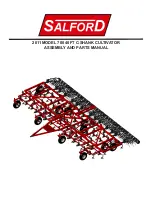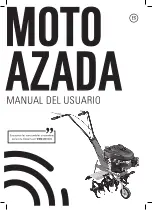
Figure 10
: Difference between dynamically calculated and fixed approach distance.
Please note the extra waypoint added to complete rotation before approaching.
4.5.3 - Pallet lip
When pallets have an outer edge lip, the robot can enforce a vertical movement on the first
layer to avoid collision with the pallet lip, see
figure 11
.
Figure 11
: Vertical movement from above the pallet lip
4.5.4 - Return path
After releasing the box at the target position, the robot visits the path waypoints in reverse
order, to return from the pallet position and pick the next box(es) from the conveyor.
In a typical setup, the robot waits above the pickup position until the required amount of
boxes are available, but in special configurations (e.g. with 2 pickup positions, where the
next pickup point is not known in advance) the robot waits at a default waiting position.
It is possible to modify the return path by removing one or more waypoints or implementing a
.
4.5.5 - User-defined path
It is possible to override the default Pally path planning by implementing custom movement
for one or more specific box positions, or even replace the default path planning in the entire
project. It is also possible to implement custom code to sort out boxes from the conveyor that
should not be palletized, based on a project-specific signal or quality check. Refer to
callbacks for further details.
4.6 - Shim papers
Shim papers are considered as special layers with no products. These layers have their own
height - i.e. the thickness of the shim paper itself. Pally does not include a default
implementation for shim paper placement - this has to be implemented for each project by
using
4.7 - Lifting column
Lifting columns extend the robot reach by adding a virtual 7th axis to the robot. The current
position of the lifting column is a parameter in all calculations in the Pally path planning.
Version 2.9.1
© Rocketfarm AS 2021. All rights reserved.
20
















































